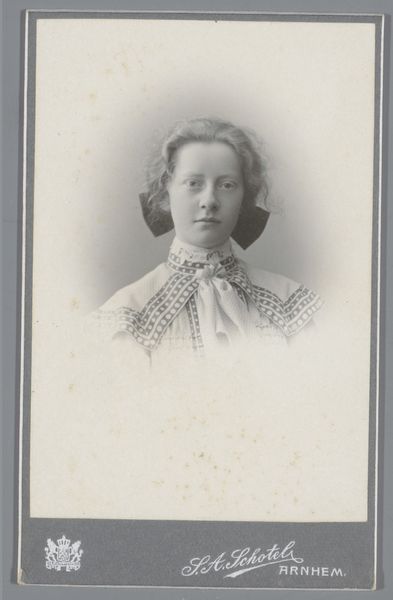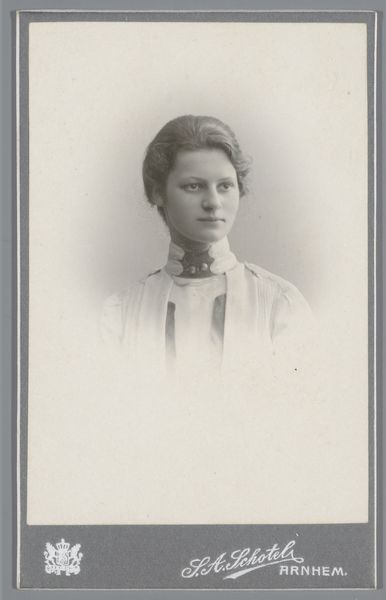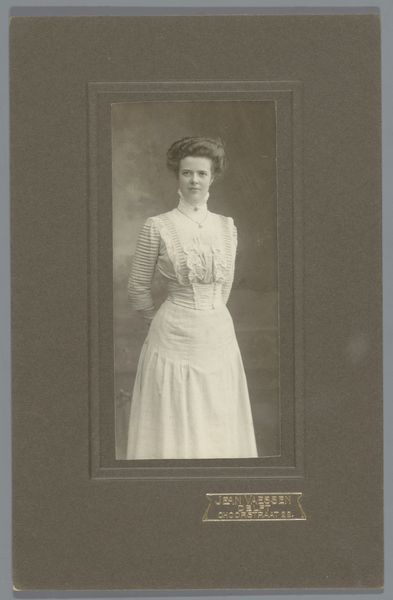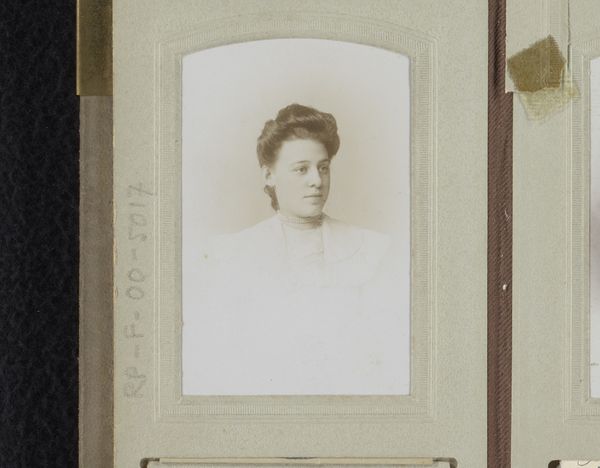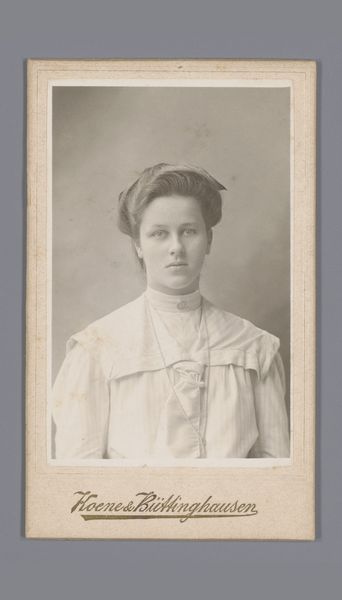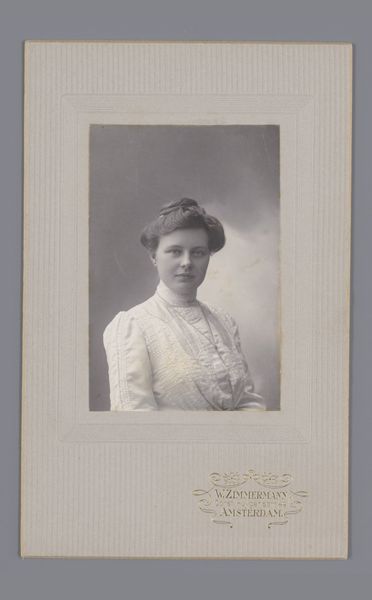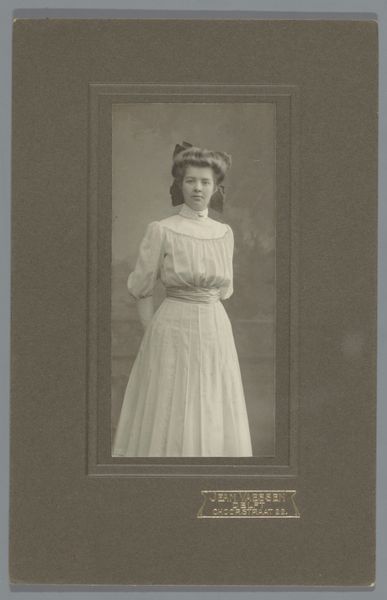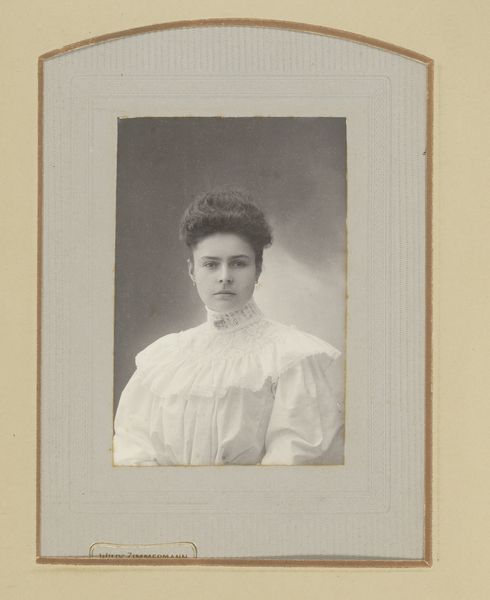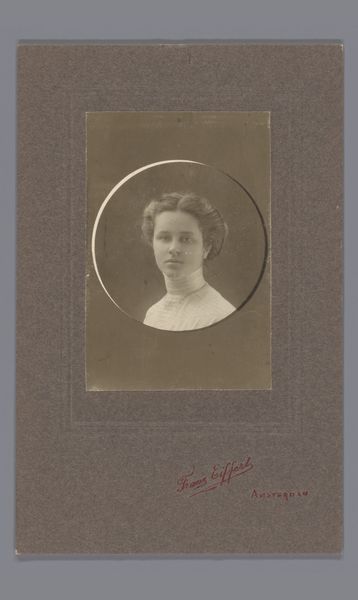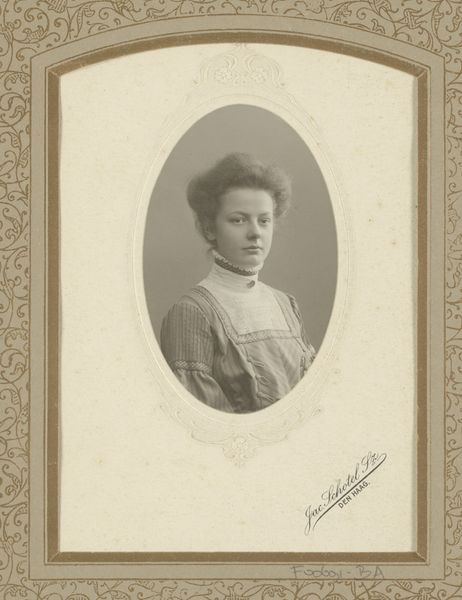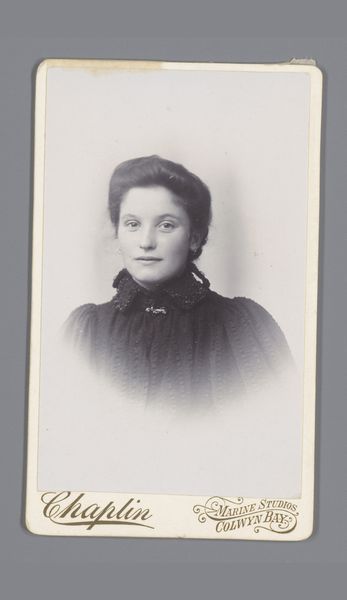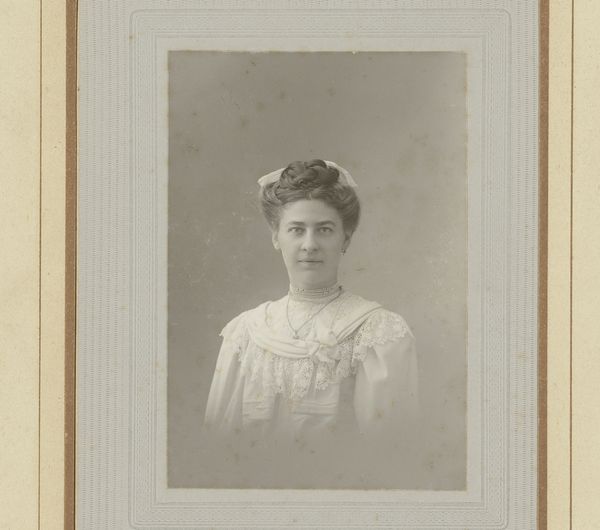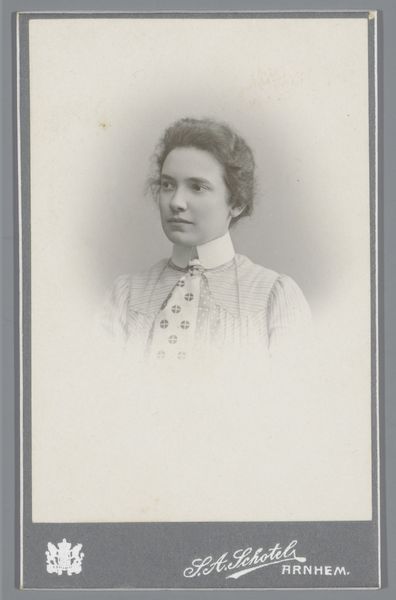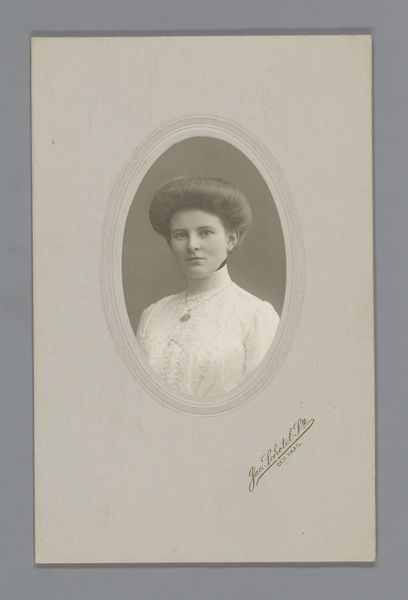
photography, gelatin-silver-print
#
portrait
#
photography
#
historical fashion
#
framed image
#
white focal point
#
gelatin-silver-print
#
modernism
#
realism
Dimensions: height 103 mm, width 64 mm
Copyright: Rijks Museum: Open Domain
Curator: Here we have a gelatin silver print simply titled "Portret van Johanna Geertruida Jonker," made sometime between 1900 and 1930 by C. Rebmam. What catches your eye first about it? Editor: It's the contrast—the delicate lace of her dress against the solid darkness of her hair ribbons. And her gaze, unwavering and direct, adds to the sense of quiet confidence. It’s very elegant. Curator: I’m intrigued by how much those dark ribbons, almost eclipsing the delicate finery of her collar, create a sort of visual tension. The circular vignette also contributes, focusing our attention on her face, as if isolating a significant figure in the collective memory. It's almost as if the artist wanted the ribbons to signal strength. Editor: I can see that. It seems to mimic her eyes, doesn’t it? Both sets act as points of attention—eyes that peer into a past and present. Looking closer at the way the light plays across her face, however, notice the soft gradation—almost cloud-like. Curator: Yes, and considering the broader context of photographic portraits in that era, one could interpret it as capturing a moment in the ongoing shift in representations of women, from passive objects to active agents. While maintaining classic techniques such as vignette the subject breaks conventions. Editor: The texture also seems important. Looking carefully at the image—especially with her eyes, the jewelry she is wearing—what do they suggest beyond just a realistic record? Are we also encountering some underlying emotional or symbolic weight through the application? Curator: Exactly! Her jewelry, though simple, could represent connections to her heritage, the importance of lineages in a changing world. She could have worn this because it reminded her of a strong bond with other family members, or simply because she adored this necklance. Ultimately we will never know. Editor: That sense of uncertainty surrounding symbols—the necklace and dark hair ribbon against that gentle light—allows an interesting dialogue. Ultimately, this photo offers a poignant space for both formalism and symbolism. Curator: Agreed. It serves as a compelling case study of historical and visual power.
Comments
No comments
Be the first to comment and join the conversation on the ultimate creative platform.
